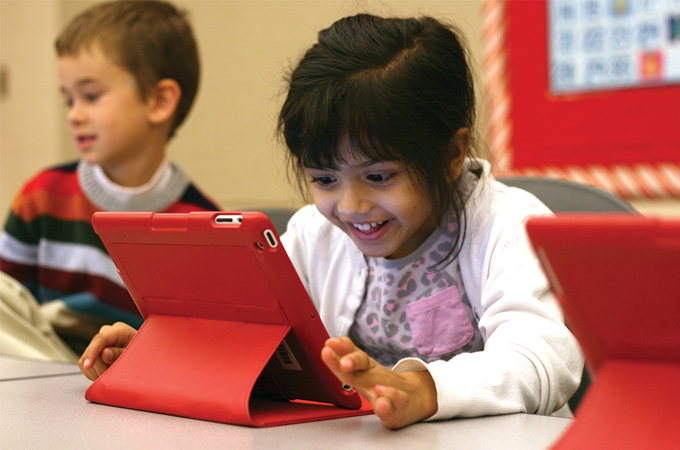Technology is reversing the roles: We parents are asking our children for help. When things go wrong with our phones and tablets, we don’t call a ‘geek,’ we holler for our tween. And if they aren’t too irritated by our middle-aged incompetence, they will fix the problem. As schools advance their technology programs, younger and younger children are becoming more and more savvy.
“This is a generation of digital natives,” says Karen Boyle, lower school director at Rossman School where student use of technology begins pre-kindergarten. “Adults have had to learn, but technology has always been part of our children’s lives.” Boyle stresses, however, that computers at Eossman are used strictly as learning tools to support the curriculum and to encourage collaboration among students. For 4-year-olds, this collaboration might mean taking part in interactive Smart Board activities that teach math and language skills, or working in groups to program robots. “Technology gives us so many ways to teach so many things,” Boyle says. But she is cautious, too. “There are wonderful benefits, but we need to be mindful also of what we might be losing,” she says, citing the disappearance of parent-child activities like peekaboo and itsy-bitsy spider. “It’s become much easier for adults to hand over a device to occupy their children.”
At Chesterfield Day School (CDS), exposure to computers begins in kindergarten, but technology is used sparingly. Jeff Horwitz, associate head, explains that CDS adheres to the Montessori model of teaching, which encourages children to think abstractly. The kind of dramatic play necessary for such thought processing is not possible on a computer, he says. “And we also know children are spending time on computers at home.” Initially, students use Smart Boards to record the weather, look for patterns and learn about science and cultural studies. The school also provides places for students to be curious, problem solve and think critically as they tackle problems around engineering, circuitry and coding. Horwitz adds that there is great value to FaceTiming a relative, replaying favorite songs on YouTube, and using apps to learn shapes and patterns. “But we can’t put a price on our children holding a book in their hands and going to the park,” he says.
Mike Vachow, head of school at Forsyth School, agrees that technology is best used sparingly in younger grades. “Screen time has no value in educating very young children,” he says, “and is almost not present here before first grade.” Forsyth begins in junior kindergarten. At this age, Vachow says it is vitally important that children learn by doing and touching, and by connecting to the people who teach them. “Sitting with a teacher reading a book is about as different from looking at a screen as ballet is from plumbing,” he says.
Starting in sixth grade, however, Forsyth students are guided by teachers to use computers as research tools. The school’s library catalog is entirely online and keyboarding is encouraged. The children also have access to two 3-D printers, which Vachow believes are beneficial for kinesthetic learning. Students use the printers for science and social studies projects—recreating ancient artifacts, for example, or building scientific models. recently, children designed their own castles and were able to hold the finished products in their hands. “This is the opposite of seeing something on a screen,” Vachow says. “Screens make everything so distant.”
Pictured: A preschooler logs on at Rossman
Photo courtesy of Rossman School








